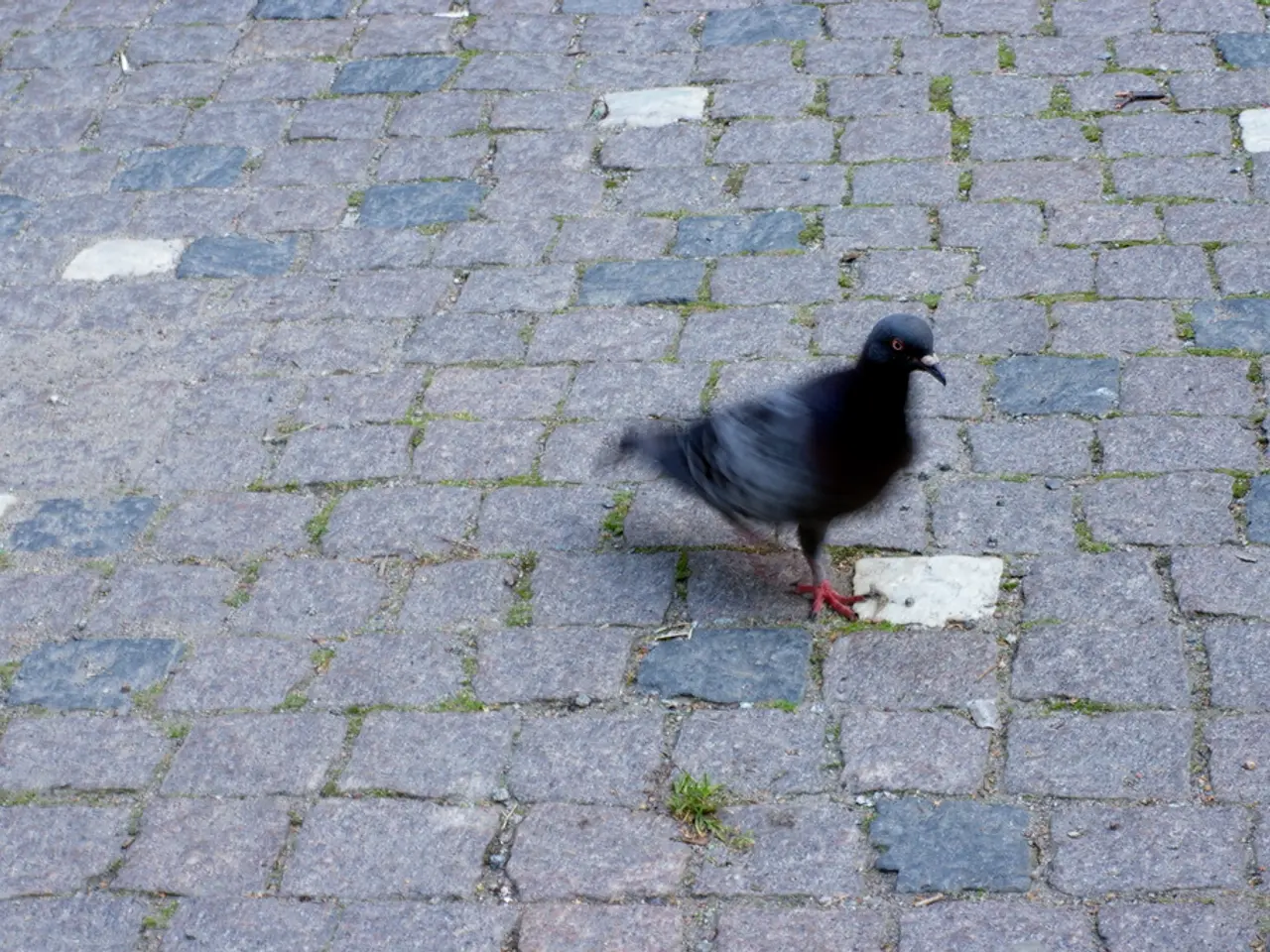Rhine Railway, based in Düsseldorf, leads the way in safeguarding both human and animal welfare
In the Lierenfeld area, the Rheinbahn operation is dealing with a persistent pigeon problem due to their nests. To address this issue, the company has adopted a solution based on the "Augsburg model."
The new pigeon house, located at the edge of the operating area, is designed to cater to the needs of the pigeons while ensuring the safety and hygiene of employees. The structure can accommodate more than 100 pigeons and is equipped with nesting boxes and seating areas, under which motor-driven conveyor belts for droppings run.
The pigeons are brought to the pigeon house using live traps and undergo a three-month acclimation period in a special large acclimatization cage. During this period, they are provided with food, water, and minerals, as well as small stones for their stomachs.
Once accustomed to their new environment, the pigeons start breeding. However, to limit reproduction, their eggs are replaced with dummies. The daily care and feeding of the pigeons is done voluntarily by animal-loving Rheinbahn employees.
The pigeon house is elevated to deter unwanted guests and is powered by a photovoltaic system mounted on the roof. This environmentally-friendly energy source ensures the motors in the pigeon house operate efficiently.
Monika Piasetzky, chairperson of the Düsseldorf Animal Protection Association, supports the measure and praises the standard of the Rheinbahn pigeon house. She notes that the association operates eight pigeon houses in the city, all of which have been well-received.
Rheinbahn board member Michael Richarz considers the cost of the pigeon house, including the PV system for autonomous power supply, as money well spent. He argues that the cleaning costs and subsequent damage from pigeon droppings would be more expensive in the long run. Richarz is satisfied with the new pigeon house, stating it effectively protects employees from pollution and meets the needs of the birds while fulfilling all animal welfare requirements.
Heiko Goebel, a Rheinbahn employee with over 50 years of experience with racing pigeons, brought two racing pigeons to demonstrate a solution. Goebel's involvement in the project reflects the company's commitment to finding a humane and effective solution to the pigeon problem.
With the implementation of the pigeon house, the Rheinbahn hopes to reduce the nuisance caused by pigeon droppings, ensuring a cleaner and safer working environment for its employees and a more hygienic environment for vehicles.








